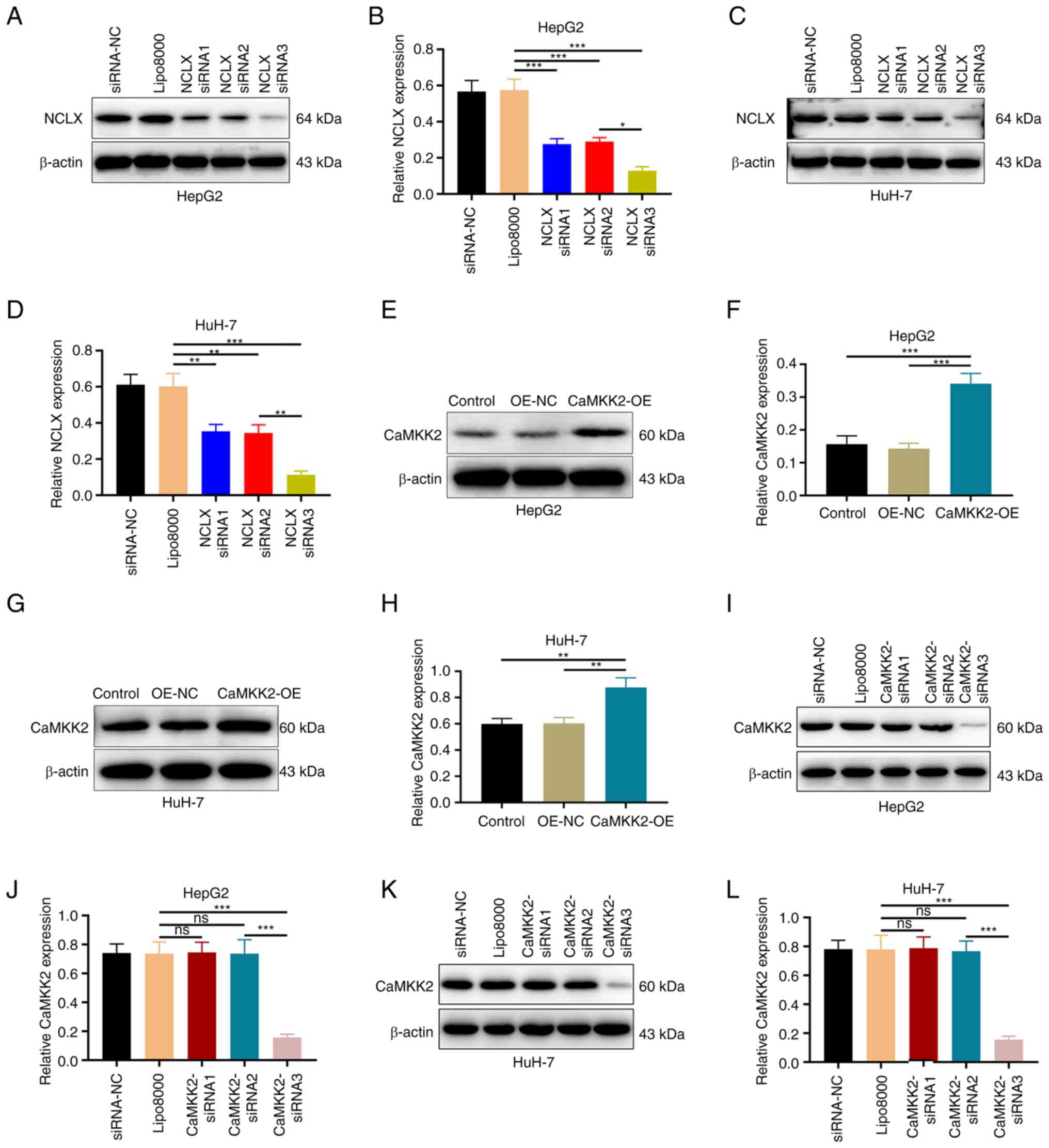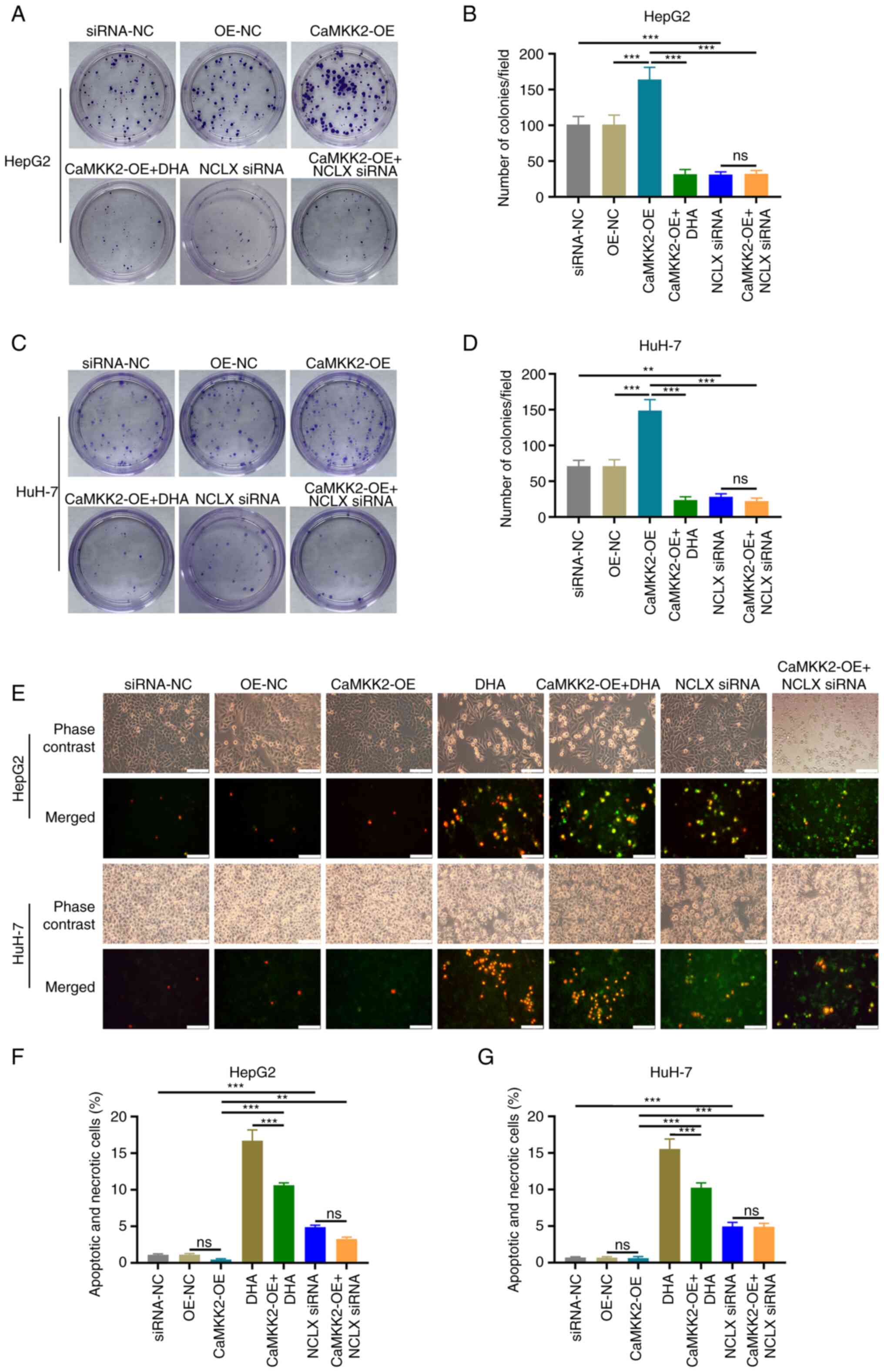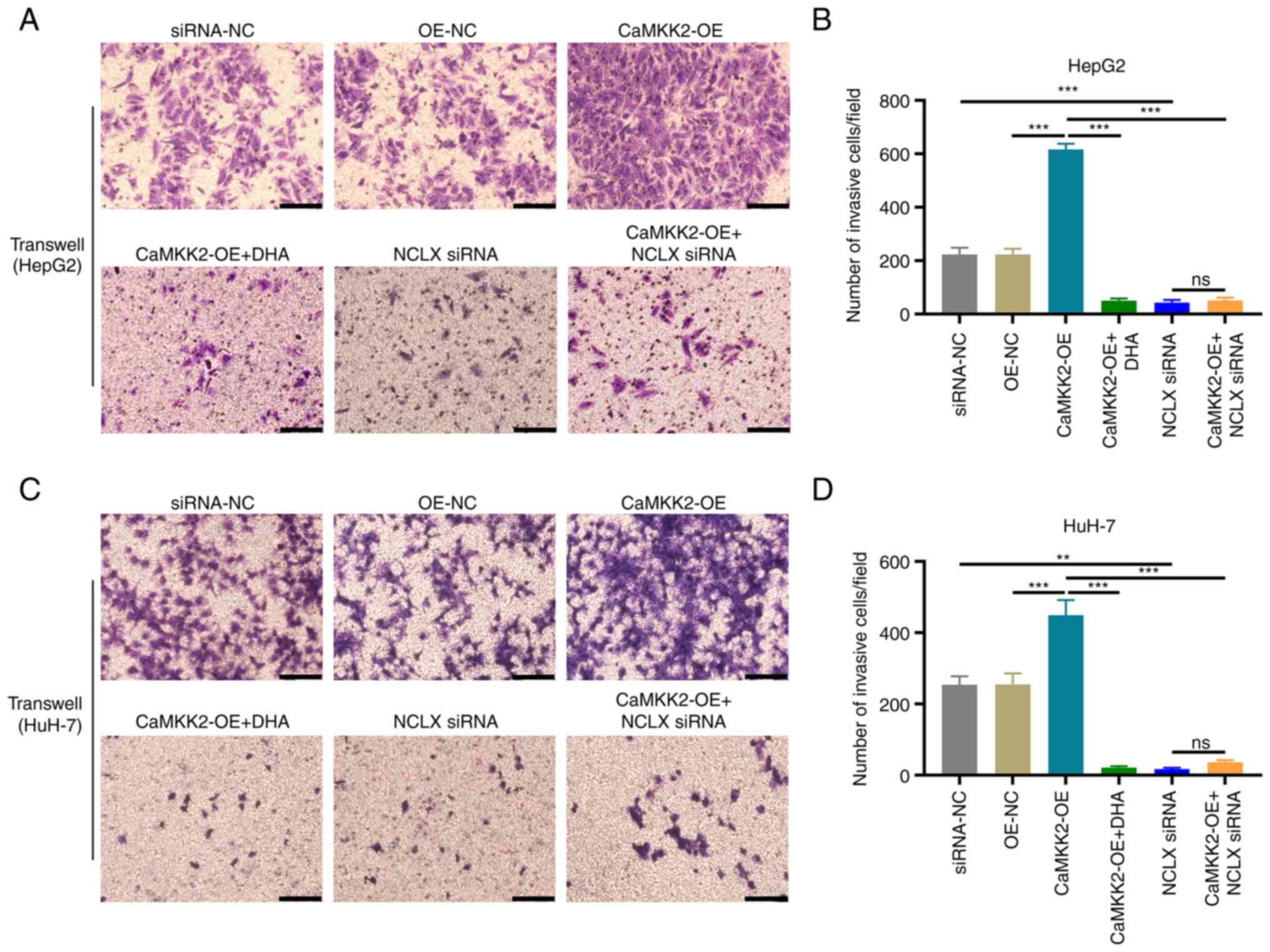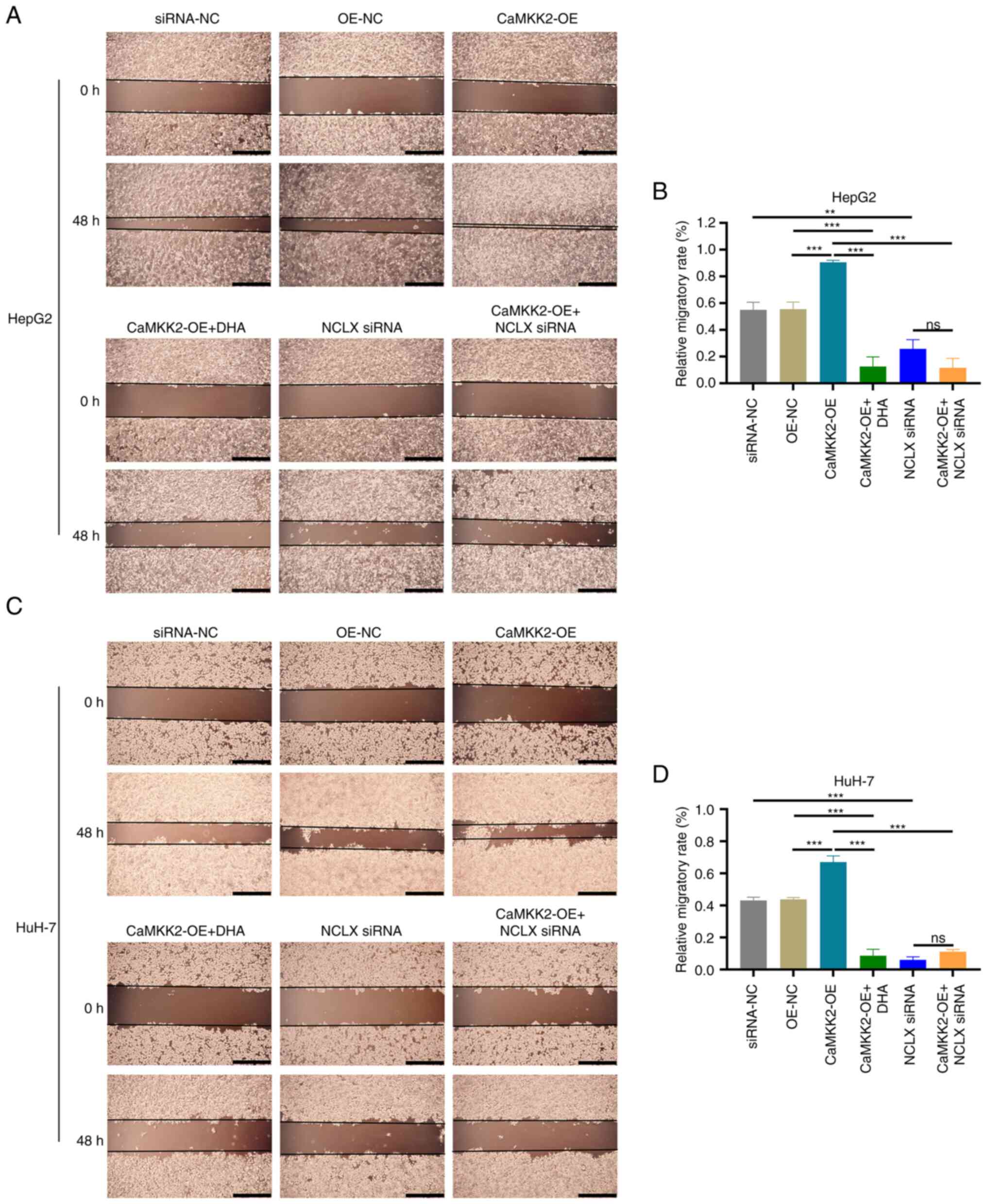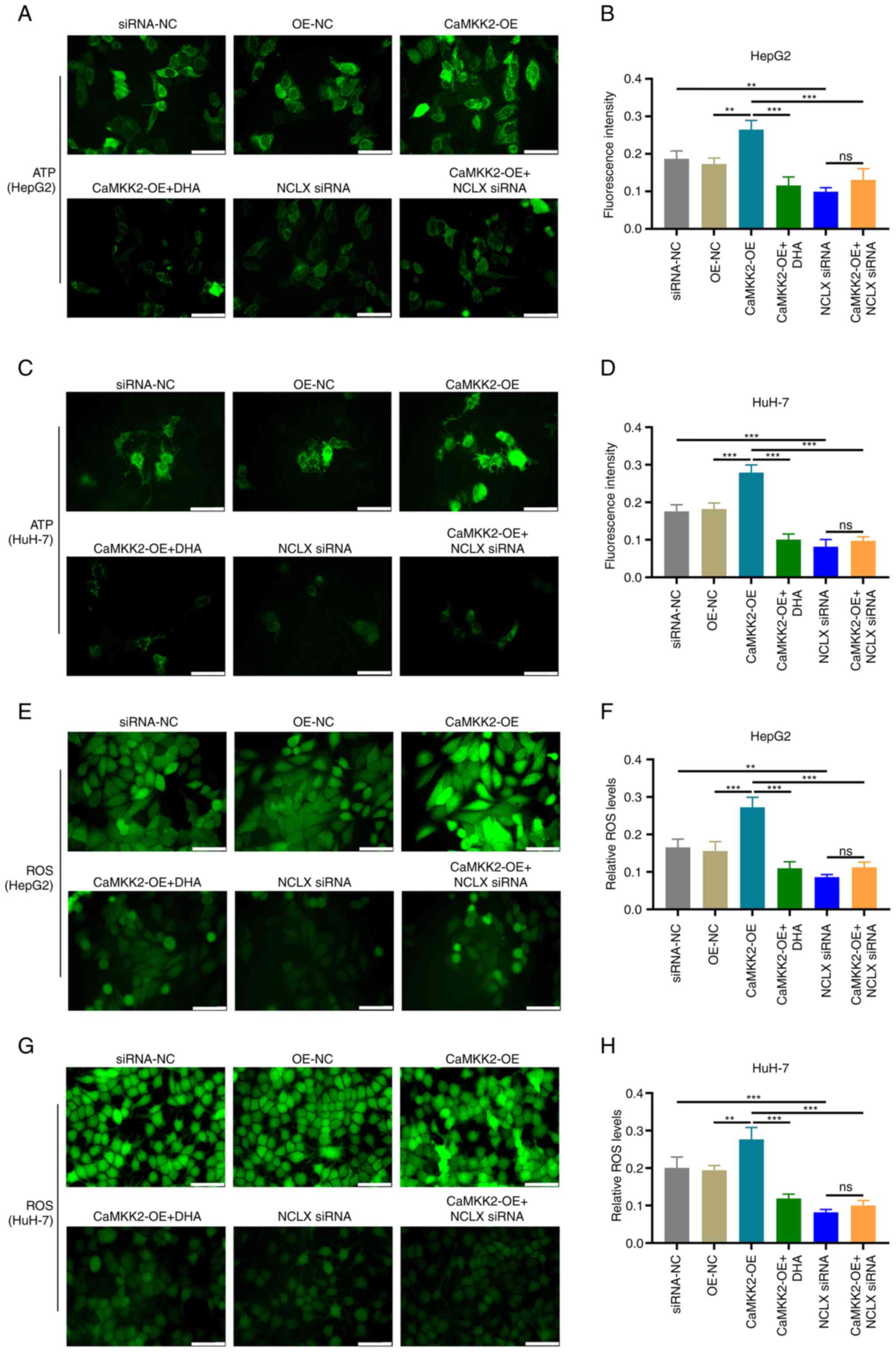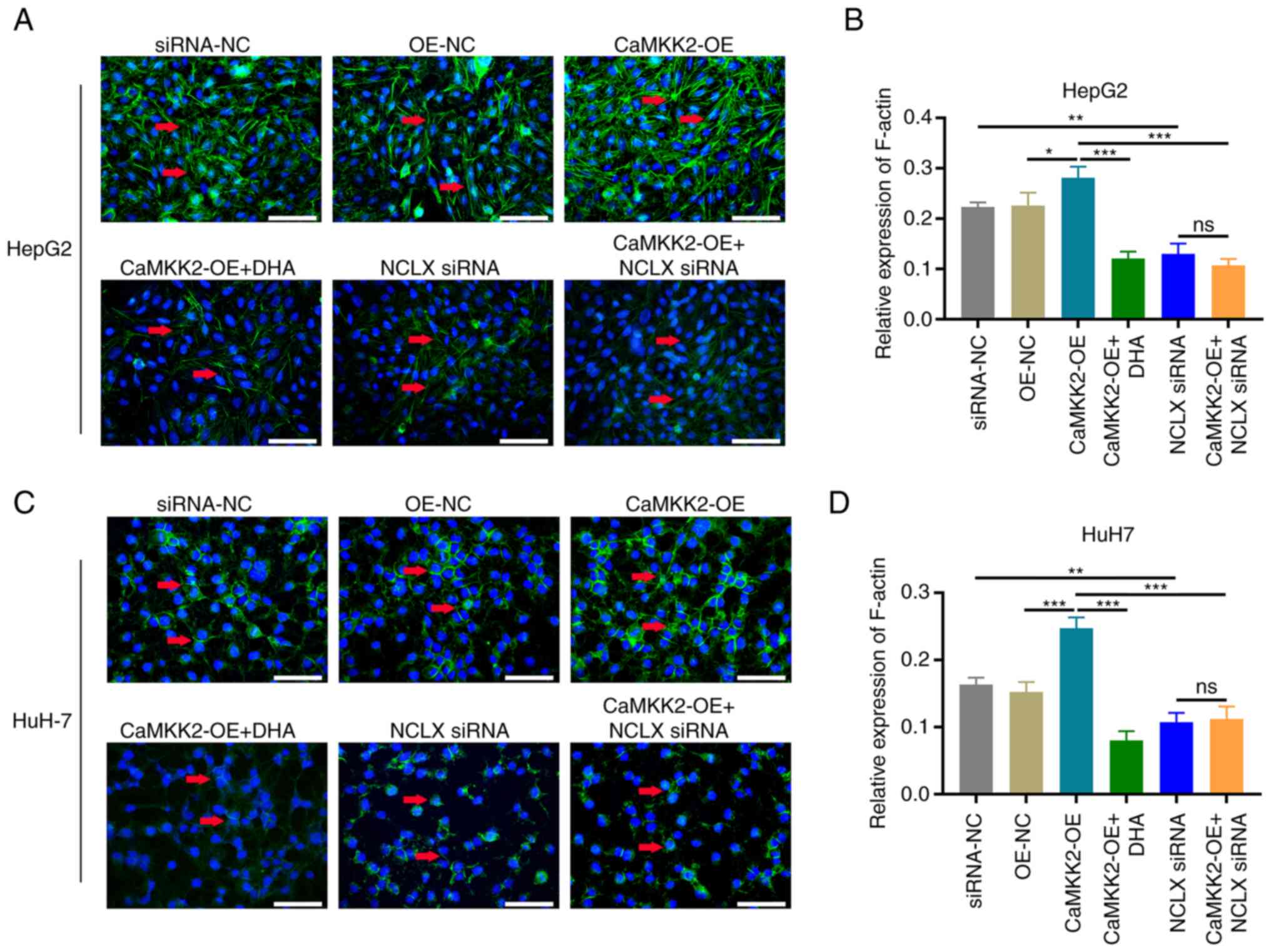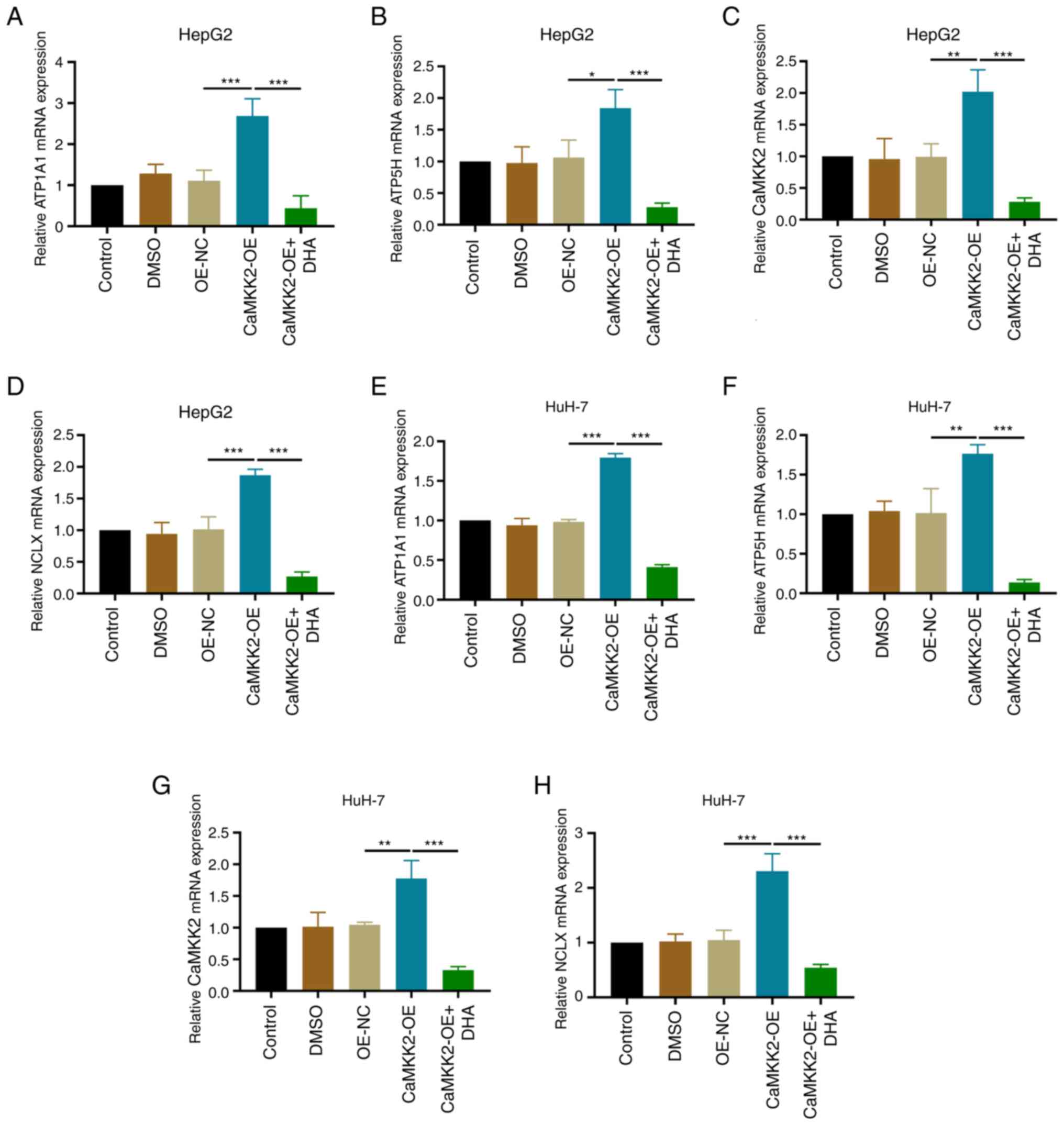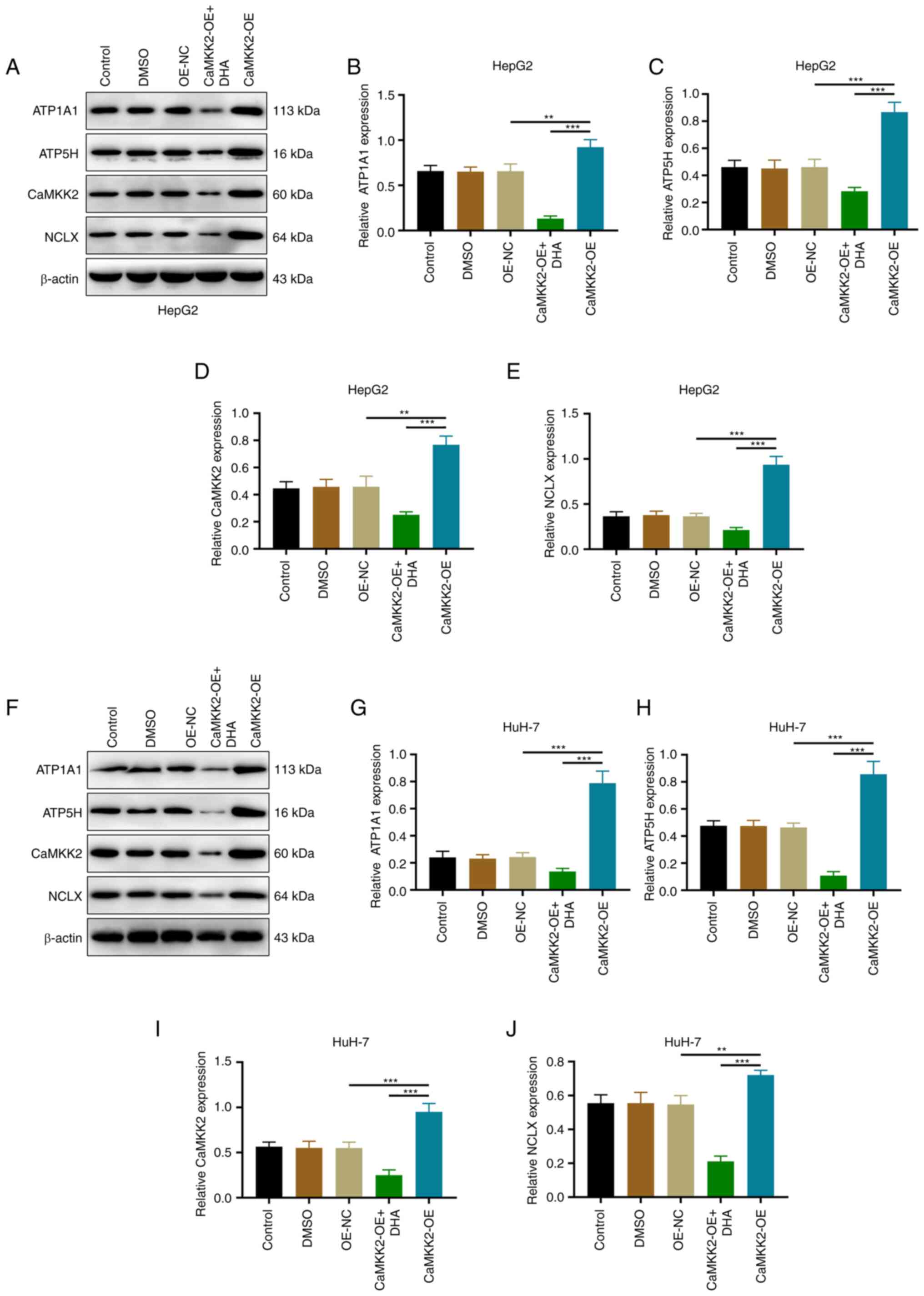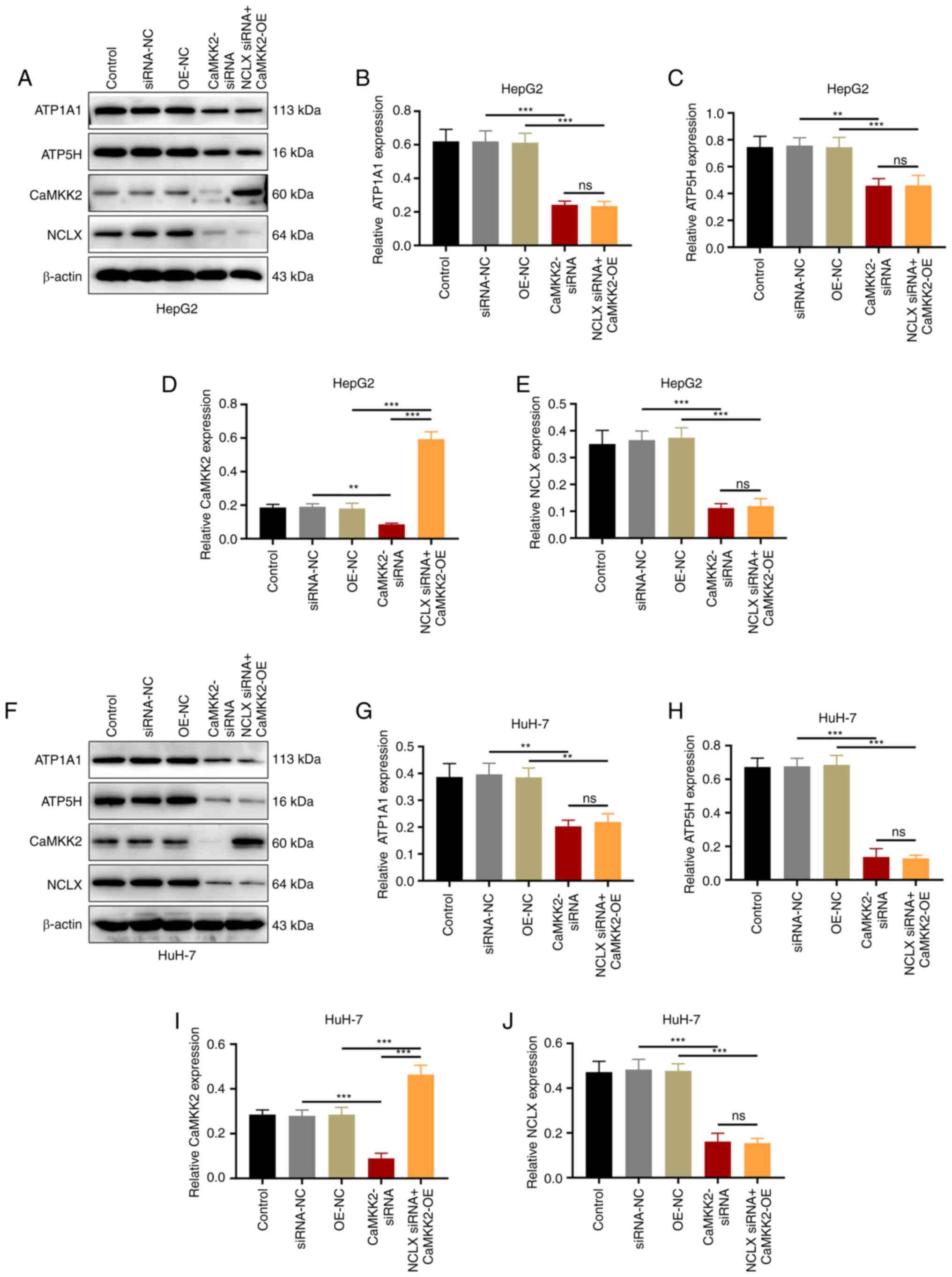|
1
|
Stewart LM, Gerner L, Rettel M, Stein F,
Burrows JF, Mills IG and Evergren E: CaMKK2 facilitates
Golgi-associated vesicle trafficking to sustain cancer cell
proliferation. Cell Death Dis. 12:10402021. View Article : Google Scholar : PubMed/NCBI
|
|
2
|
Raturi A, Gutiérrez T, Ortiz-Sandoval C,
Ruangkittisakul A, Herrera-Cruz MS, Rockley JP, Gesson K, Ourdev D,
Lou PH, Lucchinetti E, et al: TMX1 determines cancer cell
metabolism as a thiol-based modulator of ER-mitochondria Ca2+ flux.
J Cell Biol. 214:433–444. 2016. View Article : Google Scholar : PubMed/NCBI
|
|
3
|
Williams JN and Sankar U: CaMKK2 signaling
in metabolism and skeletal disease: A new axis with therapeutic
potential. Curr Osteoporos Rep. 17:169–177. 2019. View Article : Google Scholar : PubMed/NCBI
|
|
4
|
Pulliam TL, Goli P, Awad D, Lin C,
Wilkenfeld SR and Frigo DE: Regulation and role of CAMKK2 in
prostate cancer. Nat Rev Urol. 19:367–380. 2022. View Article : Google Scholar : PubMed/NCBI
|
|
5
|
Han JH, Kim YK, Kim H, Lee J, Oh MJ, Kim
SB, Kim M, Kim KH, Yoon HJ, Lee MS, et al: Snail acetylation by
autophagy-derived acetyl-coenzyme A promotes invasion and
metastasis of KRAS-LKB1 co-mutated lung cancer cells. Cancer Commun
(Lond). 42:716–749. 2022. View Article : Google Scholar : PubMed/NCBI
|
|
6
|
Lin F, Marcelo KL, Rajapakshe K, Coarfa C,
Dean A, Wilganowski N, Robinson H, Sevick E, Bissig KD, Goldie LC,
et al: The camKK2/camKIV relay is an essential regulator of hepatic
cancer. Hepatology. 62:505–520. 2015. View Article : Google Scholar : PubMed/NCBI
|
|
7
|
Dai S, Venturini E, Yadav S, Lin X, Clapp
D, Steckiewicz M, Gocher-Demske AM, Hardie DG and Edelman AM:
Calcium/calmodulin-dependent protein kinase kinase 2 mediates
pleiotropic effects of epidermal growth factor in cancer cells.
Biochim Biophys Acta Mol Cell Res. 1869:1192522022. View Article : Google Scholar : PubMed/NCBI
|
|
8
|
Pathak T, Gueguinou M, Walter V,
Delierneux C, Johnson MT, Zhang X, Xin P, Yoast RE, Emrich SM,
Yochum GS, et al: Dichotomous role of the human mitochondrial
Na(+)/Ca2(+)/Li(+) exchanger NCLX in colorectal cancer growth and
metastasis. eLife. 9:e596862020. View Article : Google Scholar : PubMed/NCBI
|
|
9
|
Guéguinou M, Ibrahim S, Bourgeais J,
Robert A, Pathak T, Zhang X, Crottès D, Dupuy J, Ternant D, Monbet
V, et al: Curcumin and NCLX inhibitors share anti-tumoral
mechanisms in microsatellite-instability-driven colorectal cancer.
Cell Mol Life Sci. 79:2842022. View Article : Google Scholar : PubMed/NCBI
|
|
10
|
Ruiz A, Alberdi E and Matute C: CGP37157,
an inhibitor of the mitochondrial Na+/Ca2+ exchanger, protects
neurons from excitotoxicity by blocking voltage-gated Ca2+
channels. Cell Death Dis. 5:e11562014. View Article : Google Scholar : PubMed/NCBI
|
|
11
|
Ni Z, He J, Wu Y, Hu C, Dai X, Yan X, Li
B, Li X, Xiong H, Li Y, et al: AKT-mediated phosphorylation of
ATG4B impairs mitochondrial activity and enhances the Warburg
effect in hepatocellular carcinoma cells. Autophagy. 14:685–701.
2018. View Article : Google Scholar : PubMed/NCBI
|
|
12
|
Ge Q, Jia D, Cen D, Qi Y, Shi C, Li J,
Sang L, Yang L, He J, Lin A, et al: Micropeptide ASAP encoded by
LINC00467 promotes colorectal cancer progression by directly
modulating ATP synthase activity. J Clin Invest. 131:e1529112021.
View Article : Google Scholar : PubMed/NCBI
|
|
13
|
Jiang W, Wang L, Zhang Y and Li H:
Circ-ATP5H Induces Hepatitis B Virus replication and expression by
regulating miR-138-5p/TNFAIP3 axis. Cancer Manag Res.
12:11031–11040. 2020. View Article : Google Scholar : PubMed/NCBI
|
|
14
|
Feng XY, Zhao W, Yao Z, Wei NY, Shi AH and
Chen WH: Downregulation of ATP1A1 Expression by Panax notoginseng
(Burk.) F.H. Chen Saponins: A potential mechanism of antitumor
effects in HepG2 cells and in vivo. Front Pharmacol. 12:7203682021.
View Article : Google Scholar : PubMed/NCBI
|
|
15
|
Althurwi SI, Yu JQ, Beale P and Huq F:
Sequenced combinations of cisplatin and selected phytochemicals
towards overcoming drug resistance in ovarian tumour models. Int J
Mol Sci. 21:75002020. View Article : Google Scholar : PubMed/NCBI
|
|
16
|
Xu T, Yang Y, Chen Z, Wang J, Wang X,
Zheng Y, Wang C, Wang Y, Zhu Z, Ding X, et al: TNFAIP2 confers
cisplatin resistance in head and neck squamous cell carcinoma via
KEAP1/NRF2 signaling. J Exp Clin Cancer Res. 42:1902023. View Article : Google Scholar : PubMed/NCBI
|
|
17
|
Song KH, Kim JH, Lee YH, Bae HC, Lee HJ,
Woo SR, Oh SJ, Lee KM, Yee C, Kim BW, et al: Mitochondrial
reprogramming via ATP5H loss promotes multimodal cancer therapy
resistance. J Clin Invest. 128:4098–4114. 2018. View Article : Google Scholar : PubMed/NCBI
|
|
18
|
Huang CJ, Zhang CY, Zhao YK, Wang D,
Zhuang L, Qian L, Xie L, Zhu Y and Meng ZQ: Bufalin inhibits
tumorigenesis and SREBP-1-mediated lipogenesis in hepatocellular
carcinoma via modulating the ATP1A1/CA2 axis. Am J Chin Med.
51:461–485. 2023. View Article : Google Scholar : PubMed/NCBI
|
|
19
|
Zhou W, Chen MM, Liu HL, Si ZL, Wu WH,
Jiang H, Wang LX, Vaziri ND, An XF, Su K, et al: Dihydroartemisinin
suppresses renal fibrosis in mice by inhibiting
DNA-methyltransferase 1 and increasing Klotho. Acta Pharmacol Sin.
43:2609–2623. 2022. View Article : Google Scholar : PubMed/NCBI
|
|
20
|
Chen YI, Chang CC, Hsu MF, Jeng YM, Tien
YW, Chang MC, Chang YT, Hu CM and Lee WH: Homophilic ATP1A1 binding
induces activin A secretion to promote EMT of tumor cells and
myofibroblast activation. Nat Commun. 13:29452022. View Article : Google Scholar : PubMed/NCBI
|
|
21
|
Eskiocak U, Ramesh V, Gill JG, Zhao Z,
Yuan SW, Wang M, Vandergriff T, Shackleton M, Quintana E, Johnson
TM, et al: Synergistic effects of ion transporter and MAP kinase
pathway inhibitors in melanoma. Nat Commun. 7:123362016. View Article : Google Scholar : PubMed/NCBI
|
|
22
|
Peng J, Wang Q, Zhou J, Zhao S, Di P and
Chen Y, Tao L, Du Q, Shen X and Chen Y: Targeted lipid
nanoparticles encapsulating dihydroartemisinin and chloroquine
phosphate for suppressing the proliferation and liver metastasis of
colorectal cancer. Front Pharmacol. 12:7207772021. View Article : Google Scholar : PubMed/NCBI
|
|
23
|
Shi H, Xiong L, Yan G, Du S, Liu J and Shi
Y: Susceptibility of cervical cancer to dihydroartemisinin-induced
ferritinophagy-dependent ferroptosis. Front Mol Biosci.
10:11560622023. View Article : Google Scholar : PubMed/NCBI
|
|
24
|
Zhang J, Li Y, Wang JG, Feng JY, Huang GD
and Luo CG: Dihydroartemisinin affects STAT3/DDA1 signaling pathway
and reverses breast cancer resistance to cisplatin. Am J Chin Med.
51:445–459. 2023. View Article : Google Scholar : PubMed/NCBI
|
|
25
|
Wu S, Li Z, Li H and Liao K:
Dihydroartemisinin reduces irradiation-induced mitophagy and
radioresistance in lung cancer A549 cells via CIRBP Inhibition.
Life (Basel). 12:11292022.PubMed/NCBI
|
|
26
|
Chen X, Cui Y and Ma Y: Long non-coding
RNA BLACAT1 expedites osteosarcoma cell proliferation, migration
and invasion via up-regulating SOX12 through miR-608. J Bone Oncol.
25:1003142020. View Article : Google Scholar : PubMed/NCBI
|
|
27
|
Wang X, Zheng D, Wang C and Chen W:
Knockdown of circ_0005615 enhances the radiosensitivity of
colorectal cancer by regulating the miR-665/NOTCH1 axis. Open Med
(Wars). 18:202306782023. View Article : Google Scholar : PubMed/NCBI
|
|
28
|
Livak K and Schmittgen T: Analysis of
relative gene expression data using real-time quantitative PCR and
the 2(−Delta Delta C(T)) method. Methods. 25:402–408. 2001.
View Article : Google Scholar : PubMed/NCBI
|
|
29
|
Liu Y, Wang R, Huang R, Rutz B, Ciotkowska
A, Tamalunas A, Hu S, Trieb M, Waidelich R, Strittmatter F, et al:
Inhibition of growth and contraction in human prostate stromal
cells by silencing of NUAK1 and −2, and by the presumed NUAK
inhibitors HTH01-015 and WZ4003. Front Pharmacol. 14:11054272023.
View Article : Google Scholar : PubMed/NCBI
|
|
30
|
Zheng Y, Liu P, Wang N, Wang S, Yang B, Li
M, Chen J, Situ H, Xie M, Lin Y, et al: Betulinic acid suppresses
breast cancer metastasis by targeting GRP78-mediated glycolysis and
ER stress apoptotic pathway. Oxid Med Cell Longev.
2019:87816902019. View Article : Google Scholar : PubMed/NCBI
|
|
31
|
Pavlova NN, Zhu J and Thompson CB: The
hallmarks of cancer metabolism: Still emerging. Cell Metab.
34:355–377. 2022. View Article : Google Scholar : PubMed/NCBI
|
|
32
|
Bonora M, Patergnani S, Rimessi A, De
Marchi E, Suski JM, Bononi A, Giorgi C, Marchi S, Missiroli S,
Poletti F, et al: ATP synthesis and storage. Purinergic Signal.
8:343–357. 2012. View Article : Google Scholar : PubMed/NCBI
|
|
33
|
Brookes PS, Yoon Y, Robotham JL, Anders MW
and Sheu SS: Calcium, ATP and ROS: A mitochondrial love-hate
triangle. Am J Physiol Cell Physiol. 287:C817–C833. 2004.
View Article : Google Scholar : PubMed/NCBI
|
|
34
|
Ponneri Babuharisankar A, Kuo CL, Chou HY,
Tangeda V, Fan CC, Chen CH, Kao YH and Lee AY: Mitochondrial
Lon-induced mitophagy benefits hypoxic resistance via
Ca2+-dependent FUNDC1 phosphorylation at the
ER-mitochondria interface. Cell Death Dis. 14:1992023. View Article : Google Scholar : PubMed/NCBI
|
|
35
|
Wells C, Liang Y, Pulliam TL, Lin C, Awad
D, Eduful B, O'Byrne S, Hossain MA, Catta-Preta CMC, Ramos PZ, et
al: SGC-CAMKK2-1: A chemical probe for CAMKK2. Cells. 12:2872023.
View Article : Google Scholar : PubMed/NCBI
|
|
36
|
Wang X, Cheng G, Miao Y, Qiu F, Bai L, Gao
Z, Huang Y, Dong L, Niu X, Wang X, et al: Piezo type
mechanosensitive ion channel component 1 facilitates gastric cancer
omentum metastasis. J Cell Mol Med. 25:2238–2253. 2021. View Article : Google Scholar : PubMed/NCBI
|
|
37
|
Sarkar A, Novohradsky V, Maji M, Babu T,
Markova L, Kostrhunova H, Kasparkova J, Gandin V, Brabec V and
Gibson D: Multitargeting prodrugs that release oxaliplatin,
doxorubicin and gemcitabine are potent inhibitors of tumor growth
and effective inducers of immunogenic cell death. Angew Chem Int Ed
Engl. 62:e2023107742023. View Article : Google Scholar : PubMed/NCBI
|
|
38
|
Singh J, Meena A and Luqman S: New
frontiers in the design and discovery of therapeutics that target
calcium ion signaling: A novel approach in the fight against
cancer. Expert Opin Drug Discov. 1:1–14. 2023. View Article : Google Scholar
|
|
39
|
Que Z, Zhou Z, Liu S, Zheng W and Lei B:
Dihydroartemisinin inhibits EMT of glioma via gene BASP1 in
extrachromosomal DNA. Biochem Biophys Res Commun. 675:130–138.
2023. View Article : Google Scholar : PubMed/NCBI
|
|
40
|
Fan M, Zhang J, Tsai CW, Orlando BJ,
Rodriguez M, Xu Y, Liao M, Tsai MF and Feng L: Structure and
mechanism of the mitochondrial Ca2+ uniporter
holocomplex. Nature. 582:129–133. 2020. View Article : Google Scholar : PubMed/NCBI
|
|
41
|
Kennedy G, Gibson O, T O'Hare D, Mills IG
and Evergren E: The role of CaMKK2 in Golgi-associated vesicle
trafficking. Biochem Soc Trans. 51:331–342. 2023. View Article : Google Scholar : PubMed/NCBI
|
|
42
|
Stork BA, Dean A, Ortiz AR, Saha P,
Putluri N, Planas-Silva MD, Mahmud I, Rajapakshe K, Coarfa C, Knapp
S, et al: Calcium/calmodulin-dependent protein kinase kinase 2
regulates hepatic fuel metabolism. Mol Metab. 62:1015132022.
View Article : Google Scholar : PubMed/NCBI
|
|
43
|
Najar M, Arefian M, Sidransky D, Gowda H,
Prasad T, Modi P and Chatterjee A: Tyrosine phosphorylation
profiling revealed the signaling network characteristics of CAMKK2
in gastric adenocarcinoma. Front Genet. 13:8547642022. View Article : Google Scholar : PubMed/NCBI
|
|
44
|
Najar MA, Aravind A, Dagamajalu S,
Sidransky D, Ashktorab H, Smoot DT, Gowda H, Prasad TSK, Modi PK
and Chatterjee A: Hyperactivation of MEK/ERK pathway by
Ca2+/calmodulin-dependent protein kinase kinase 2
promotes cellular proliferation by activating cyclin-dependent
kinases and minichromosome maintenance protein in gastric cancer
cells. Mol Carcinog. 60:769–783. 2021. View Article : Google Scholar : PubMed/NCBI
|
|
45
|
Waseem M and Wang BD: Promising strategy
of mPTP modulation in cancer therapy: An emerging progress and
future insight. Int J Mol Sci. 24:55642023. View Article : Google Scholar : PubMed/NCBI
|
|
46
|
Su Y, Zhao D, Jin C, Li Z, Sun S, Xia S,
Zhang Y, Zhang Z, Zhang F, Xu X, et al: Dihydroartemisinin induces
ferroptosis in HCC by promoting the formation of PEBP1/15-LO. Oxid
Med Cell Longev. 2021:34567252021. View Article : Google Scholar : PubMed/NCBI
|
|
47
|
Fu F, Wang W, Wu L, Wang W, Huang Z, Huang
Y, Wu C and Pan X: Inhalable Biomineralized liposomes for cyclic
Ca2+-Burst-centered endoplasmic reticulum stress
enhanced lung cancer ferroptosis therapy. ACS Nano. 17:5486–5502.
2023. View Article : Google Scholar : PubMed/NCBI
|
|
48
|
Timm KN, Hu DE, Williams M, Wright AJ,
Kettunen MI, Kennedy BWC, Larkin TJ, Dzien P, Marco-Rius I,
Bohndiek SE, et al: Assessing oxidative stress in tumors by
measuring the rate of hyperpolarized [1-13C]Dehydroascorbic acid
reduction using 13C magnetic resonance spectroscopy. J Biol Chem.
292:1737–1748. 2017. View Article : Google Scholar : PubMed/NCBI
|
|
49
|
Hsu YF, Kung FL, Huang TE, Deng YN, Guh
JH, Marchetti P, Marchesi E, Perrone D, Navacchia ML and Hsu LC:
Anticancer activity and molecular mechanisms of an ursodeoxycholic
acid methyl Ester-dihydroartemisinin hybrid via a triazole linkage
in hepatocellular carcinoma Cells. Molecules. 28:23582023.
View Article : Google Scholar : PubMed/NCBI
|
|
50
|
Szatrowski TP and Nathan CF: Production of
large amounts of hydrogen peroxide by human tumor cells. Cancer
Res. 51:794–798. 1991.PubMed/NCBI
|
|
51
|
Jia F, Liu Y, Dou X, Du C, Mao T and Liu
X: Liensinine inhibits osteosarcoma growth by ROS-mediated
suppression of the JAK2/STAT3 signaling pathway. Oxid Med Cell
Longev. 2022:82456142022. View Article : Google Scholar : PubMed/NCBI
|
|
52
|
Wójcik P, Žarković N, Gęgotek A and
Skrzydlewska E: Involvement of metabolic lipid mediators in the
regulation of apoptosis. Biomolecules. 10:4022020. View Article : Google Scholar : PubMed/NCBI
|
|
53
|
Han H, Lim JW and Kim H: Lycopene inhibits
activation of epidermal growth factor receptor and expression of
cyclooxygenase-2 in gastric cancer cells. Nutrients. 11:21132019.
View Article : Google Scholar : PubMed/NCBI
|
|
54
|
Katoshevski T, Bar L, Tikochinsky E, Harel
S, Ben-Kasus Nissim T, Bogeski I, Hershfinkel M, Attali B and
Sekler I: CKII control of axonal plasticity is mediated by
mitochondrial Ca2+ via mitochondrial NCLX. Cells.
11:39902022. View Article : Google Scholar : PubMed/NCBI
|
|
55
|
Tangeda V, Lo YK, Babuharisankar AP, Chou
HY, Kuo CL, Kao YH, Lee AY and Chang JY: Lon upregulation
contributes to cisplatin resistance by triggering NCLX-mediated
mitochondrial Ca2+ release in cancer cells. Cell Death
Dis. 13:2412022. View Article : Google Scholar : PubMed/NCBI
|
|
56
|
Assali EA, Jones AE, Veliova M, Acín-Pérez
R, Taha M, Miller N, Shum M, Oliveira MF, Las G, Liesa M, et al:
NCLX prevents cell death during adrenergic activation of the brown
adipose tissue. Nat Commun. 11:33472020. View Article : Google Scholar : PubMed/NCBI
|
|
57
|
Britti E, Delaspre F, Tamarit J and Ros J:
Calpain-inhibitors protect frataxin-deficient dorsal root ganglia
neurons from loss of mitochondrial Na+/Ca2+
exchanger, NCLX, and apoptosis. Neurochem Res. 46:108–119. 2021.
View Article : Google Scholar : PubMed/NCBI
|
|
58
|
Lee SH, Duron HE and Chaudhuri D: Beyond
the TCA cycle: New insights into mitochondrial calcium regulation
of oxidative phosphorylation. Biochem Soc Trans. 51:1661–1673.
2023. View Article : Google Scholar : PubMed/NCBI
|
|
59
|
Zhao H, Yan G, Zheng L, Zhou Y, Sheng H,
Wu L, Zhang Q, Lei J, Zhang J, Xin R, et al: STIM1 is a metabolic
checkpoint regulating the invasion and metastasis of hepatocellular
carcinoma. Theranostics. 10:6483–6499. 2020. View Article : Google Scholar : PubMed/NCBI
|
|
60
|
Liu M, Jin L, Sun S, Liu P, Feng X, Cheng
Z, Liu W, Guan K, Shi Y, Yuan H, et al: Metabolic reprogramming by
PCK1 promotes TCA cataplerosis, oxidative stress and apoptosis in
liver cancer cells and suppresses hepatocellular carcinoma.
Oncogene. 37:1637–1653. 2018. View Article : Google Scholar : PubMed/NCBI
|
|
61
|
Dong S, Guo X, Han F, He Z and Wang Y:
Emerging role of natural products in cancer immunotherapy. Acta
Pharm Sin B. 12:1163–1185. 2022. View Article : Google Scholar : PubMed/NCBI
|
|
62
|
Augimeri G, Fiorillo M, Morelli C, Panza
S, Giordano C, Barone I, Catalano S, Sisci D, Andò S and Bonofiglio
D: The Omega-3 docosahexaenoyl ethanolamide reduces CCL5 secretion
in triple negative breast cancer cells affecting tumor progression
and macrophage recruitment. Cancers (Basel). 15:8192023. View Article : Google Scholar : PubMed/NCBI
|
|
63
|
Tompkins E, Mimic B, Penn RB and Pera T:
The biased M3 mAChR ligand PD 102807 mediates qualitatively
distinct signaling to regulate airway smooth muscle phenotype. J
Biol Chem. 299:1052092023. View Article : Google Scholar : PubMed/NCBI
|
|
64
|
Du F, Yang L, Liu J, Wang J, Fan L,
Duangmano S, Liu H, Liu M, Wang J, Zhong X, et al: The role of
mitochondria in the resistance of melanoma to PD-1 inhibitors. J
Transl Med. 21:3452023. View Article : Google Scholar : PubMed/NCBI
|
|
65
|
Sahinbegovic H, Jelinek T, Hrdinka M, Bago
JR, Turi M, Sevcikova T, Kurtovic-Kozaric A, Hajek R and Simicek M:
Intercellular mitochondrial transfer in the tumor microenvironment.
Cancers (Basel). 12:17872020. View Article : Google Scholar : PubMed/NCBI
|















